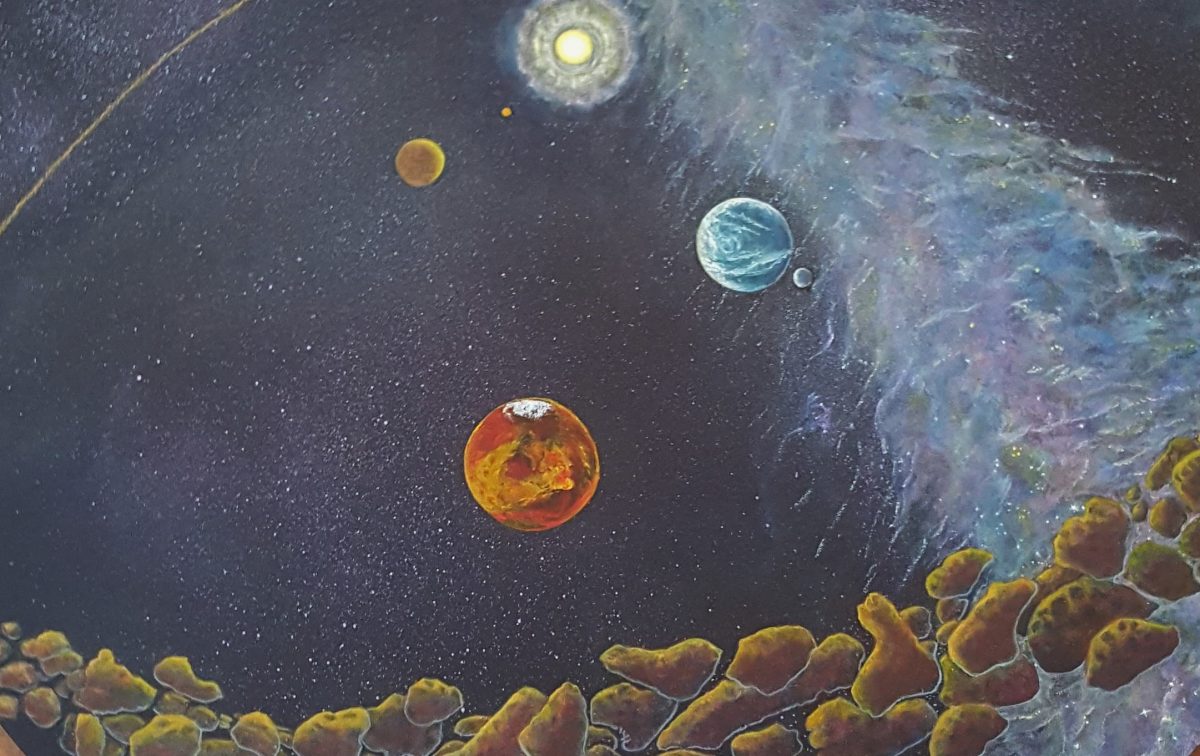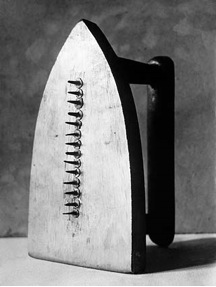This is a way of communicating through a visual image, as is drawing. The latter includes pastel, charcoal, water-colour, and pencils, and can be calligraphic, a quick or detailed sketch, or a drawing in the sand with a stick.

Cave paintings – Lascaux
Painting can be merely an example of visualising theories and techniques, as Seurat did with the theories of Optical Colour Mixing, or can be very personal and emotional. It can also be a form of recording history – from the earliest efforts of the cavemen, who painted pictures on the walls of their caves of the animals of the region, for either ritualistic, magical or religious reasons, to paintings of the horrors of the Vietnam War.

Ancient Mayan Fresco
Paintings were created to depict the events and the social conditions of the Mesapotamians, the Egyptians, Greeks, Romans, Incan and Mayan people – often as wall murals or carved edifices. Then paintings became portable with the creation of icons during the Dark ages, for religious purposes of course. In the Middle Ages paintings were still portable, e.g. psalters, as well as being painted on walls as frescos. They were also on wooden or canvas panels – or on paper as prints became available – which could be hung in the homes, instead of only in palaces or buildings of importance.
Paintings reflected the tribe mentality in Ancient times with the kings communicating and being interchangeable with the Gods. In the Dark Ages the nature worship developed into Christian ideas, with saints and martyrs, and people living close to death all their lives. This permeated their art which was oppressive.

Raphael – School of Athens
The Renaissance recalled the idealism of the Greeks and Romans, and saw the development of scientific discoveries and mathematical formulas which were used in art as linear perspective. They were also able to create a sense of real depth through the use of atmospheric perspective – their paintings created as a ‘window on the world’, depicting implied textures and volume, and humanism to the figures. The 15th and 16th centuries were of ‘man the thinking man’ – humanism. the 17th century shows the age of plenty, materialism, with still life paintings.

Salisbury Cathedral from the Meadows – Constable
The 18th Century showed idealism and romanticism, with the use of rococo style of over-embellishment, portraying only important people and places. The 19th century was the industrial revolution and depicted the squalor of this time, with human life held cheap. Social Realist paintings showed this.


Picasso – Brick Factory as Tortosa; & Seated Woman (Simultaneity)
The 20th century saw the development of Cubism and Surrealism – breaking the ‘window on the world’, and expressing a different reality – that of art as technological changes affected it. The ambiguity of our life is reflected through our art, and the way we use such diversity of media to portray it. Picasso pushed Cubism further to create Simultaneity – showing all sides of the image at the same time. The Surrealists based their work on psychi – art has become very literary, and verbal.


Mondrian; Pollock
The 21st century has seen continual development, and stretching of already flexible boundaries within and between each Postmodern and Contemporary artistic genre, portraying the Astronomical reality, scientific advancements, and the turmoil between global cultures that exemplify our current world. There are no limits on the multi-use of Media in the creation of our art.


Ian McKellan; Alan Cummings – by Christian Hook
PAINTING MEDIUMS:
PIGMENT is the colouring agent, originally in powdered form from nature – stone chalk, earth, plants, bark – late 19th century psynthetic pigments were chemically produced in tubes, giving practical and portable usage. Impressionists were able to take them into the fields (au Plein Air) to paint.
BINDER in the tubes of paint is already combined – for oils it is linseed oil; for acrylics it is acrylic polymer; for tempura it is egg yolk; for encaustic it is beeswax; and for fresco work it is lime in the plaster. A Mural is ON the wall; a Fresco is PART OF the wall.
Dispensing Agent: thins and waters the medium to make it malleable. For acrylic and tempura it is water, and for oil it is turps, or citrus fluid.
Sizing: is used to make the surface non-porous – often a glue-form, e.g. Bondcrete. GESSO is glue mixed with chalk and plaster. AQUAHERE dries clear and can be built up to create an Impasto affect. There are now many products available if your canvases are not pre-Sized.
PAINTING DEFINITIONS:
WASH is a thin transparent coating of pigment – using water or turps depending on whether acrylic, watercolour or oil.
GLAZE is the same, but has the oil thinned with linseed oil, or the acrylic mixed with medium.
IMPASTO is thickly applied paint, often applied with a palette knife – acrylics are mixed with an impasto medium, while oils are used neat.
MATT is a dull finish to the painting, naturally occurring in tempura, and if too much turps is used in oils.
GOUACHE is an opaque water colour paint, also poster paint.
CARTOON is a fullsize detailed drawing of the finished work, using volume, which is transferred to the canvas – it was used to solve any value problems.
UNDERPAINTING was done in sepia monochrome, putting in all the details and values – it was then painted over with pure pigments. It went out with the Impressionists who were able to paint in the field.
LINEAR refers to a painting that is composed of defined lines, either painted on as contours or where edges clearly abut, and composed of defined shapes.
PAINTERLY is work with paint alone, no drawing, with colour suggesting volume and details, the use of texture of the paint, blending and giving no clear definitions as edges weren’t important.
FORMAL painting follows the rules and techniques, producing correct images rather than giving content. theoretical.
EXPRESSIVE painting is straight from the heart, drawing a response from the viewer, showing emotion, and full of content.
Jud House 4/09/2016
. . . . .














































































